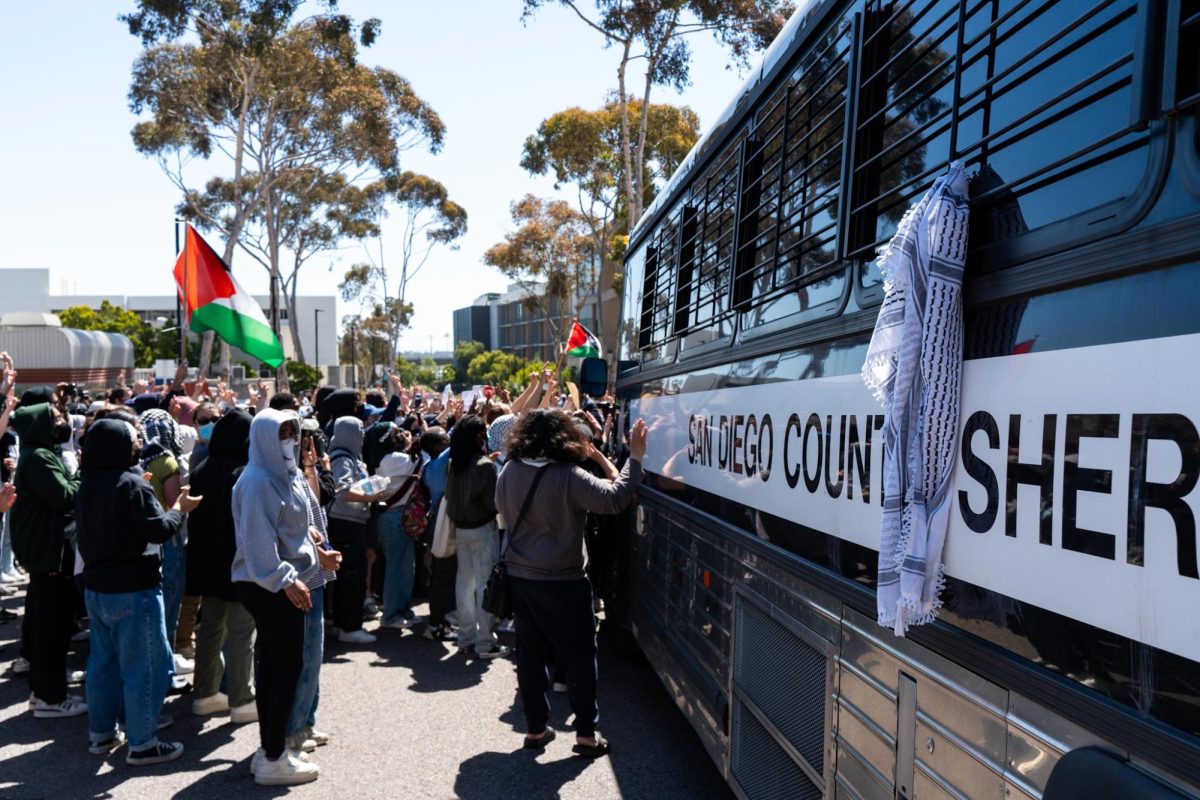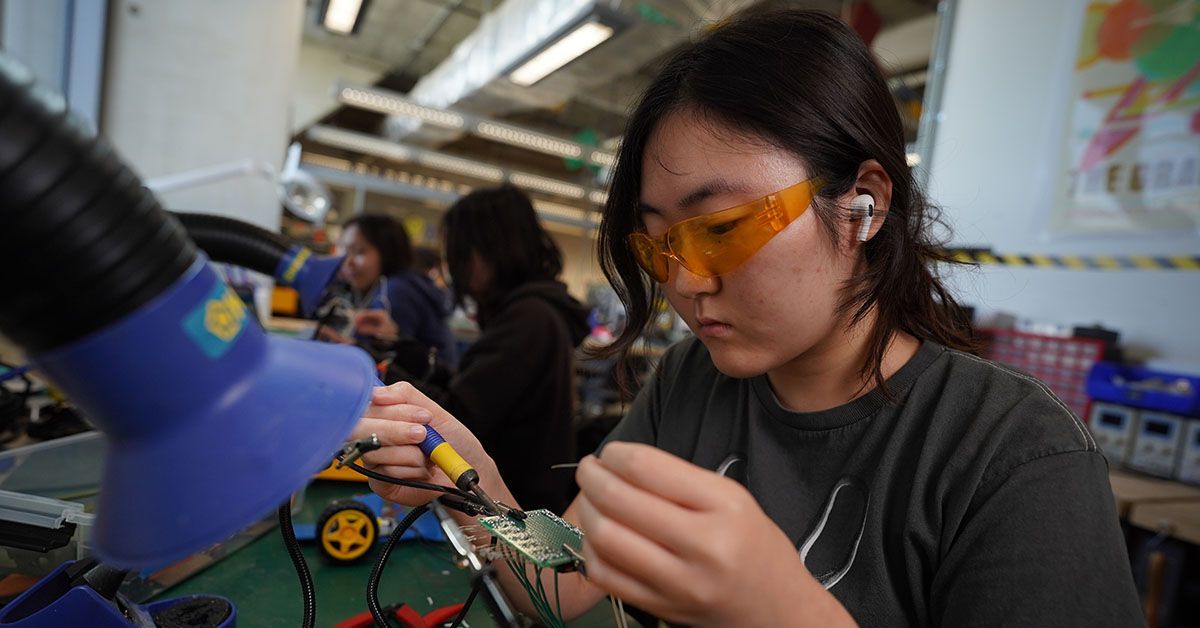Preceding many UC San Diego lectures or events — often from the humanities departments — professors or TAs note that UCSD students, members, and faculty reside on unceded Kumeyaay land. The lines adhere to a land acknowledgement statement and end with the UCSD community acknowledging and being grateful for the Kumeyaay people’s stewardship and contributions. In total, San Diego has the highest number of federally recognized reservations for any county in the U.S.: 18.
During Native American Heritage Month, which began in November, Chancellor Khosla noted in a campus-wide email that UCSD kicks off every month with a celebration of Native American culture and dance — one that’s been taking place annually for 16 years. The month-long celebrations include performances, food, and films. In fact, Miss Kumeyaay Nation, Priscilla Ortiz-LaChappa, was a keynote speaker for the event due to her active participation in helping preserve language and traditions.
But the history of UC expansion of public schooling is perhaps not as polished and much richer than the statement on unceded land. The concept is intertwined with the lives of Native Americans. Moreover, if much emphasis is on spotlighting Native Americans for November solely, their identities are again potentially cast away to a designated time rather than acknowledged for their rich presence before any UC schools came along.
Through the Morrill Act, nearly 11 million acres of land from about 250 tribes and nations were expropriated from tribal lands for UC higher education. This means that UCSD is not the only UC school on tribal land; others include UC Davis on the Patwin people’s lands.
Despite this expropriation, this act was the start of those of modest means to access higher education and was the first major federal funding for higher education.
UC Berkeley dubs what happened in the early 19th century with Native American land as a “UC land grab.”
The ramifications are still present. To put things into perspective, the Kumeyaay people have been present in San Diego and Mexico for thousands of years. Their interactions with UCSD have not evidently been sparse and clean-cut though, as detailed by recent disputes of who gets to obtain artifacts and remains on the land through the Native American Graves Protection and Repatriation Act. The act entails that tribes can obtain excavated human remains and cultural items from their land.
As also stated by the 2020 fall report titled “The University of California Land Grab: A Legacy of Profit from Indigenous Land” from the Joseph A. Myers Center for Research on Native American Issues, California Indians received the short end of the stick through the Morrill Act enacted for postsecondary education. This coupled with the present underrepresentation of Native Americans in higher education means that Native American individuals’ presence can be suppressed once more.
After all, according to UCSD’s 2021-2022 student body demographics, American Indian/Alaska Native students made up just 0.4% of the undergraduate body.
The report states that the earnings from land sales of the Morrill Act invested into stocks would mean a permanent endowment for each university while on the opposite side, many tribes didn’t receive any compensation. Also, the Native American tribes in California didn’t get compensated for the land sold to fund the UC’s endowment.
Moreover, the source explores the familiar settler-colonialism concept or the erasure of Indigenous people for land to be taken by settlers. This concept of ownership collides with many Native Americans’ beliefs of having a caretaker relationship with the land above owning it. The report comments on how the U.S., among other countries, utilized genocidal violence in the 19th century as well as seizure of land and ironically impacted the native inhabitants from obtaining a more education-oriented agenda.
UCSD pledges not to leave any Native American student on the sidelines and promises efforts will be made to incorporate them in the educational sphere.
On the second floor of Price Center West, the currently expanding Intertribal Resource Center is present. Its priority is to help American Indian/Alaskan Native/ indigenous students and allow tribal communities to gain more education.
The Native American Opportunity plan for Native American undergrad and graduate students is one of the plans the center supports and further, its waiving process began this fall. This plan means that for incoming California students who are additionally a part of a “federally recognized Native American, American Indian, and Alaska Native tribes,” in-state systemwide tuition and Student Services Fees are covered without a separate application process.
This ties into the possible reparations UC schools have made; others include providing scholarships to Native students to do research on UC lands and further acknowledgement of the NAGPRA.
The land acknowledgements UC schools incorporate to recognize the Native American communities of the school are one of the first ways students may hear about what tribal land existed before UC universities emerged. Still, the statements can seem more like vague platitudes than informative lessons to learn from. Such words can easily hold little meaning without an effort to understand the Kumeyaay people’s or other Native American people’s identities.
In late May, UCSD will hold its free, annual Powwow performance, an event of dance such as gourd dance and bird singers as well as cultural learning opportunities as a whole. For more information, one may get in touch with the UCSD’s Intertribal Resource Center.
Photo Courtesy of Iván Rivero
















jennifer lopez • Sep 13, 2023 at 12:08 am
I agree with the article that land acknowledgements are important, but they can also be vague and unhelpful if they are not accompanied by concrete actions to address the historical and ongoing injustices faced by Native Americans.
In the case of UCSD, the university has taken some steps to address the legacy of the Morrill Act, such as providing scholarships to Native students and waiving tuition for Native students who are members of federally recognized tribes. However, I believe that the university could do more to incorporate Native American perspectives and voices into its curriculum and to support Native American students and communities on campus.
Thanks
Jennifer
Writer at
eva • Jan 11, 2023 at 11:42 am
I honestly don’t see why more people haven’t done this given that I work two shifts, two during the day and two during the evening. And I surely received a $29,000 check. Being able to work from ac50 home allows me to spend more time with my children, which is wonderful.
.
.
See this article for further details—————————————>>> WORK AT HOME
Adam • Jan 11, 2023 at 2:14 am
I would say that there are no problems in life in this place, rather that the local educational systems do not quite suit me. I often experience difficulty or low interest in many of them. Often I even visit https://typemyessay.me/ to get help with common tasks.